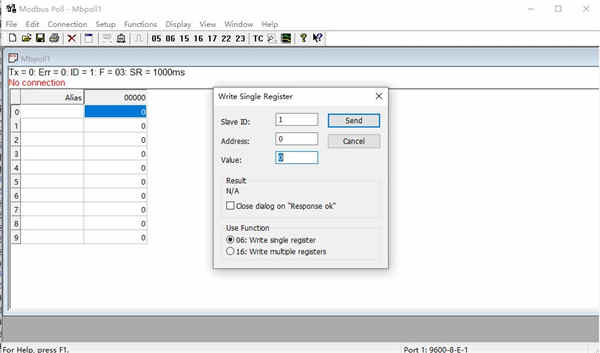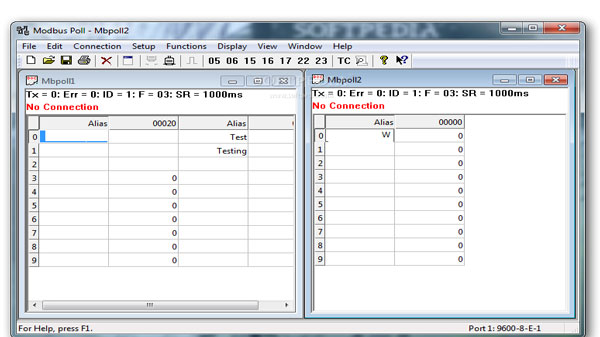
In that case Modbus and other types of connections can co-exist at the same physical interface at the same time. When using more versatile network systems like TCP/IP over Ethernet, the Modbus messages are embedded in packets with the format necessary for the physical interface. In this case the network is dedicated to Modbus. On simple interfaces like RS485 or RS232, the Modbus messages are sent in plain form over the network. A device can also communicate with several Modbus nodes at once, even if they are connected with different interface types, without the need to use a different protocol for every connection. Because of this, Modbus gives the possibility to easily upgrade the hardware structure of an industrial network, without the need for large changes in the software. The same protocol can be used regardless of the connection type. This gives the Modbus interface definition a very long lifetime. On plain old RS232 are the same messages used as on Modbus/TCP over Ethernet. The format of these Modbus messages is independent of the type of physical interface used. The Modbus communication interface is built around messages. While Modbus was previously mainly used on wired serial communication lines, there are also extensions to the standard for wireless communications and TCP/IP networks. are able to communicate with Modbus, also many intelligent sensors are equipped with a Modbus interface to send their data to host systems. Not only intelligent devices like micro-controllers, PLCs etc. The nice thing of the Modbus standard is the flexibility, but at the same time the easy implementation of it. In a short time hundreds of vendors implemented the Modbus messaging system in their devices and Modbus became the de facto standard for industrial communication networks. The original Modbus interface ran on RS-232, but most later Modbus implementations used RS-485 because it allowed longer distances, higher speeds and the possibility of a true multi-drop network. The physical layer of the Modbus interface was free to choose. It was an open standard that described the messaging structure. Communication between the Modbus nodes was achieved with messages. It is 1979 when PLC manufacturer Modicon-now a brand of Schneider Electric’s Telemecanique-published the Modbus communication interface for a multi-drop network based on a master/client architecture.

Modbus has its roots in the late seventies of the previous century. Because of this, Modbus became the first widely accepted field-bus standard.

These standards-like the Modbus interface-emerge because they are good, simple to implement and are therefore adapted by many manufacturers. Not because they are pushed by a large group of vendors or a special standards organisation. Some communication standards just emerge.


 0 kommentar(er)
0 kommentar(er)
